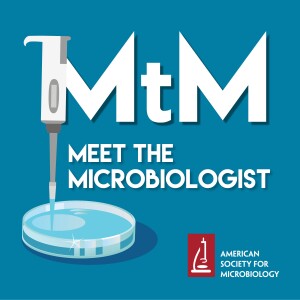
087: Legionnaire’s Disease with Michele Swanson
 2018-07-25
2018-07-25
Why do Legionnaire’s Disease outbreaks occur mostly in the summer? What is the connection of the Flint change in water source and Legionella outbreaks in the area? Michele Swanson discusses her work on Legionella pneumophila and her path from busy undergraduate to ASM President.
Julie’s Biggest Takeaways:
Legionella pneumophila is a waterborne microbe that lives in fresh water and can colonize water systems of the built environment. Colonization of cooling systems, like those used in air conditioning systems, can lead to contaminated water droplets that can cause disease.
Legionella are very adaptable to different environment, but scientists don’t have great models to determine the exact preferences of the bacterium.
After Flint switched water sources from lake to the Flint river, a chemical that prevents corrosion was omitted from the water treatment. This led to lead in the water, which was detected in pediatric patients. An increase of legionella cases in the two years also occurred, and the question was whether the outbreak was related to the shift in water chemistry. Michele joined a team of water engineers, epidemiologists and sociologists to answer this question, and the team found an association between low chlorine levels and high risk of legionella disease.
Across the globe, more than 80% of disease is associated with L. pneumophila serogroup 1. The serogroup is based on the bacterial lipopolysaccharide (LPS) structure, which in this strain is very hydrophobic and may allow this serogroup to withstand a higher degree of desiccation than other strains. A urine-based diagnostic test works well, but only to detect serogroup 1. The strain isolated from patients of the Flint outbreak were serogroup 6, as were Legionella isolated from the homes of Flint residents.
Featured Quotes:
“Amoeba are very good at digesting bacteria, eating them for food, but Legionella, because it’s been under this severe selective pressure of the amoeba, they’ve evolved tools to allow them not only to survive within the amoeba but to replicate within the vacuole of the amoeba.”
“We now have equipment that throws water into the air and gives [Legionella] a new opportunity to be ingested by a macrophage. It can then deploy the same tricks it uses to grow inside amoeba to grow inside the macrophage.”
“[Human infection] is a tragedy for the patient, but also for the microbe...humans are a dead-end for the bacterium.”
“I was really delighted to be recruited to work with this interdisciplinary team on a public health crisis here in my home state. It has opened my eyes to a much more complex pathway and I just feel really privileged in this stage in my career to be able to turn my attention to these larger public health issues.”
“People want to hear encouragement; we have a tendency to compare ourselves to those who are 5-10 years ahead of us. Encouragement really is valuable.”
Links for this Episode:
Michele Swanson at the University of Michigan
mBio: Prevalence of infection-competent Legionella pneumophila within premise plumbing within southeast Michigan
PNAS: Assessment of the Legionnaire’s disease outbreak in Flint, Michigan
Microbial Sciences blog post: Examining Flint: New research highlights lack of Legionella public policy
ASM membership
More Episodes
Create your
podcast in
minutes
- Full-featured podcast site
- Unlimited storage and bandwidth
- Comprehensive podcast stats
- Distribute to Apple Podcasts, Spotify, and more
- Make money with your podcast
It is Free
- Privacy Policy
- Cookie Policy
- Terms of Use
- Consent Preferences
- Copyright © 2015-2024 Podbean.com





